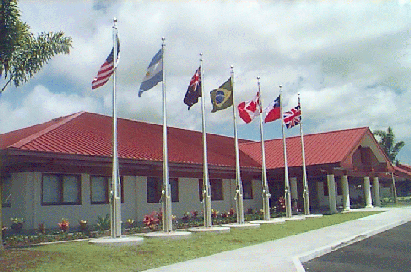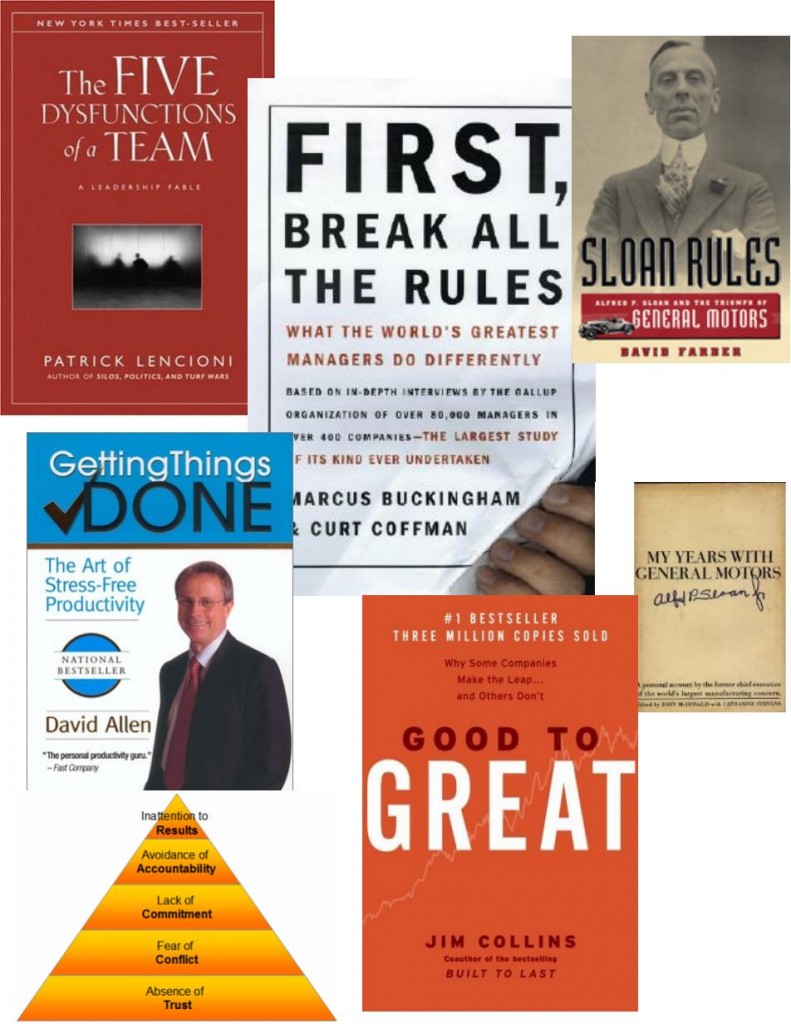A while back, the Gemini Directorate tasked an internal team to develop suggestions and techniques for better communications and task management within Gemini. We took our mission very seriously and researched what many successful and unsuccessful companies have done to address these issues themselves. Sometimes we found support for our own biases and ways of doing things, while other times, we learned new ways that were an improvement on what we were doing and thinking ourselves. A recurring theme of our report was the importance of developing more varied, and open communications. As I discussed in my semi-review of The Five Dysfunctions of a Team , the basis of teamwork is trust. I don’t think anyone will accuse me of going out on a limb when I say the basis of trust is good communication. The key word here is good for not just any communications will do the trick; there must be a history of full, honest, and open communications for trust to develop. People often think they are communicating when they say anything, and they are by one definition of the word, but they aren’t building trust and a sense of teamwork unless that communication is received and is both honest and open.
I was reminded of this report of ours after reading an editorial on the current Toyota recall disaster. Toyota’s response to the problem is fairly typical and only served to exacerbate its predicament and cost them a valuable loss of community trust. Bad news? First ignore it, maybe it will go away. Still there? Downplay it; things aren’t nearly as bad as they seem. Still not enough? Say you’re looking into things. You’ll take care of it. What? The people demand more? You have to act? OK, admit to maybe you may have done something less than ideal and you regret it if something bad might have happened for something you might have done or not. What? They mean it? You really have to do something? Well, maybe now you will have to really take action, but if you waited until this point to act, chances are your problem is a lot bigger than it was in the beginning and chances are that you won’t get the credit for having done the right thing once you finally appear forced into doing so. In this instance, one thing is clear: do not emulate the Toyota way!
So here, I want to take some thoughts from our working group report, expand upon them a bit, and start off by wondering why people often do not communicate openly, why they often hide the whole truth and paint a friendlier, but inaccurate picture of the situation. Why aren’t full open disclosures at all times the norm?
For one, people worry that someone will misinterpret something they say, causing great grief and frustration for all involved. Yes, this will happen, but the cause is often a lack of complete information. Complete information provides the context and the motivation behind an action or a situation. The solution, then, is not to further hold back even more information, but rather to provide more information to remedy the confusion. Rumors, speculation, and misinterpretation all arise from incomplete communication. When people only get a small fragment of information through indirect means, they extrapolate and infer to fill in the gaps in their knowledge. Once you start providing regular amounts of real information, people will understand the context and motivations better and will be less likely to get the wrong impression or jump to the wrong conclusion. Your audience will learn how to interpret your news. This broader understanding will end up returning to you in new ideas and solutions to problems from sources never tapped before.
Second, people worry what effect negative information will have on their reputations. Many organizations, however (I cited Redfin and the Sloan Digital Sky Survey through specific examples in the full report and would be happy to talk more about their efforts here, if there’s interest), proved that communicating your problems as well as your successes actually helps your reputation. No organization is problem-free and those that report to be so are undoubtedly viewed with suspicion and distrust When you hide information, you implicitly are stating that you are doing things others will not like. This is not the image you usually want to project.
Finally, some hoard information to seemingly protect their jobs. What these people do not realize is that everyone else is just as busy as they are and few of us have time to take over someone else’s job even if all the instructions on how to do so were readily available. In any growing, exploring, exciting organization (like Gemini), there are always important new projects people could be doing if only there were more time. If, by distributing your knowledge out to the community, you can offload some of your tasks, you can begin new tasks that would not get done otherwise. No one’s importance to a high-efficiency organization is determined solely by what information they know.
Furthermore, information hoarding causes severe inefficiency in information transfer. Someone needing information cannot simply go to a reference source to find it, but must first find out (usually after several failed attempts) who the information custodian is, then try to extract the information. Instead of a quick web search or visit to a document library, many people become involved in the information quest and when the single source is ultimately discovered his/her reputation is not enhanced by the unique knowledge, but lessened by it being so difficult to find.
So, returning to the issue of trust, I note an article from the July/August 2008 Harvard Business Review discussing the common traits of CEOs in a selection of companies that have transformed themselves into high efficiency organizations [the emphasis below is their’s]:
The CEOs we studied [created a link between the people who do the work and the performance they must deliver] by combining four strategies. First, they earned the trust of their organizations through their openness to the unvarnished truth. Second, they were deeply engaged with their people, and their exchanges were direct and personal; employees in the companies we studied had a particularly close connection with the CEO and were seldom surprised to meet him or her. Third, having earned legitimacy and trust, these CEOs were able to mobilize their people around a focused agenda. Finally, while they were all strong individuals, these senior leaders realized that they could succeed only as part of a committed leadership team, and they devoted considerable efforts to building their firm’s collective leadership capabilities.
The emphasis in this excerpt is about building trust within an organization, but the concepts apply equally well to building trust outside an organization as well. By communicating openly with your public early, you provide transparency and engender trust. You forestall the temptation to jump to conclusions and to assume the worst. Your form a sense of team and you implicitly bring in your community in helping to solve the problem, rather than leaving them to wonder why you aren’t doing enough already. You turn your customer base into a community, wanting you, often working with you, to succeed. In this information age, your customers will find out what you’re trying to hide sooner or later and you’ll be well ahead of the game if you are the one supplying that information and engaging your community in an appropriate solution from the start.
Scot finds he has enough to do other than keeping track of and worse, remembering what information he told to whom, so approached the tenet of open and honest communications simply as an incredible boost to efficiency. The beneficial side-effects were a nice added bonus.






